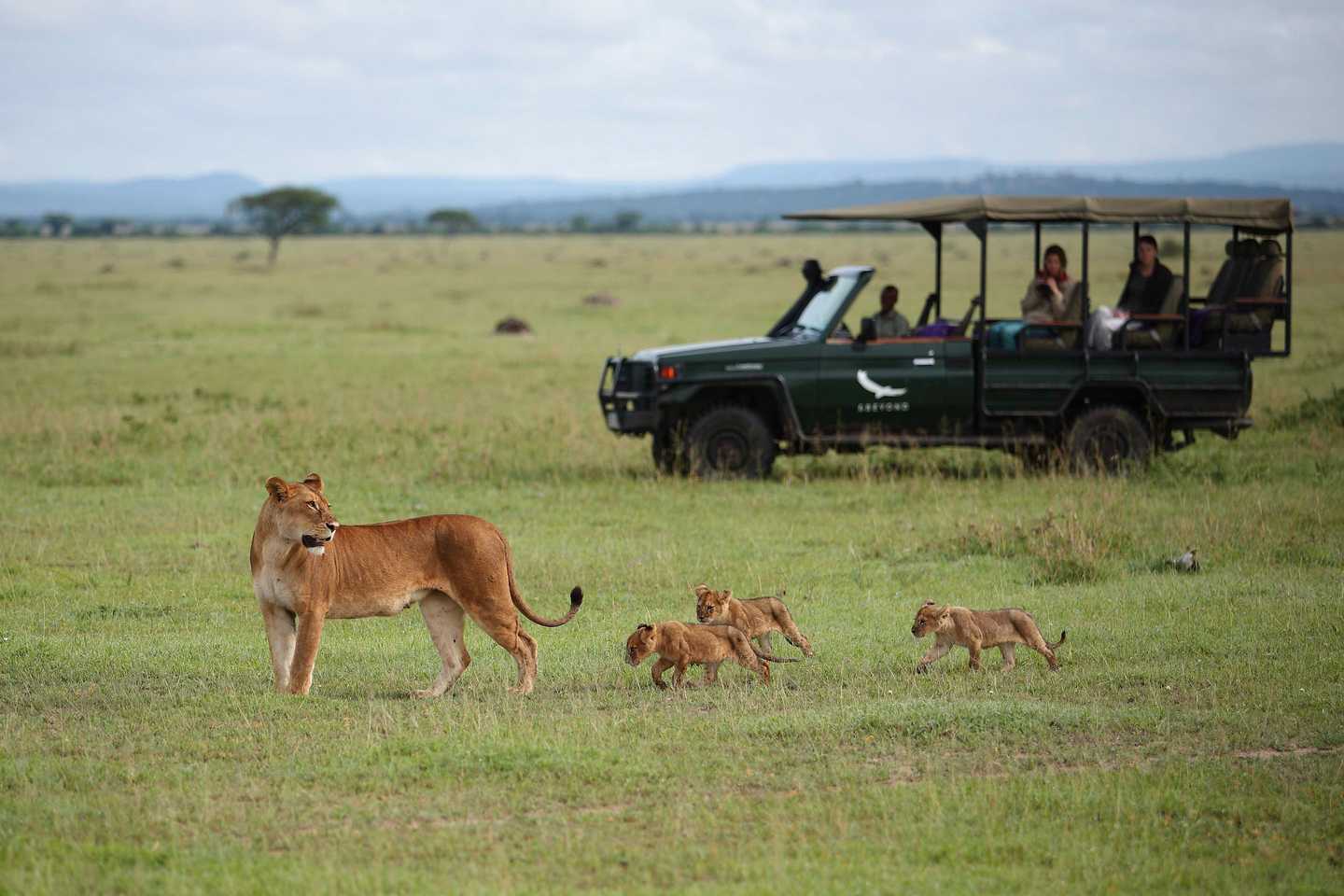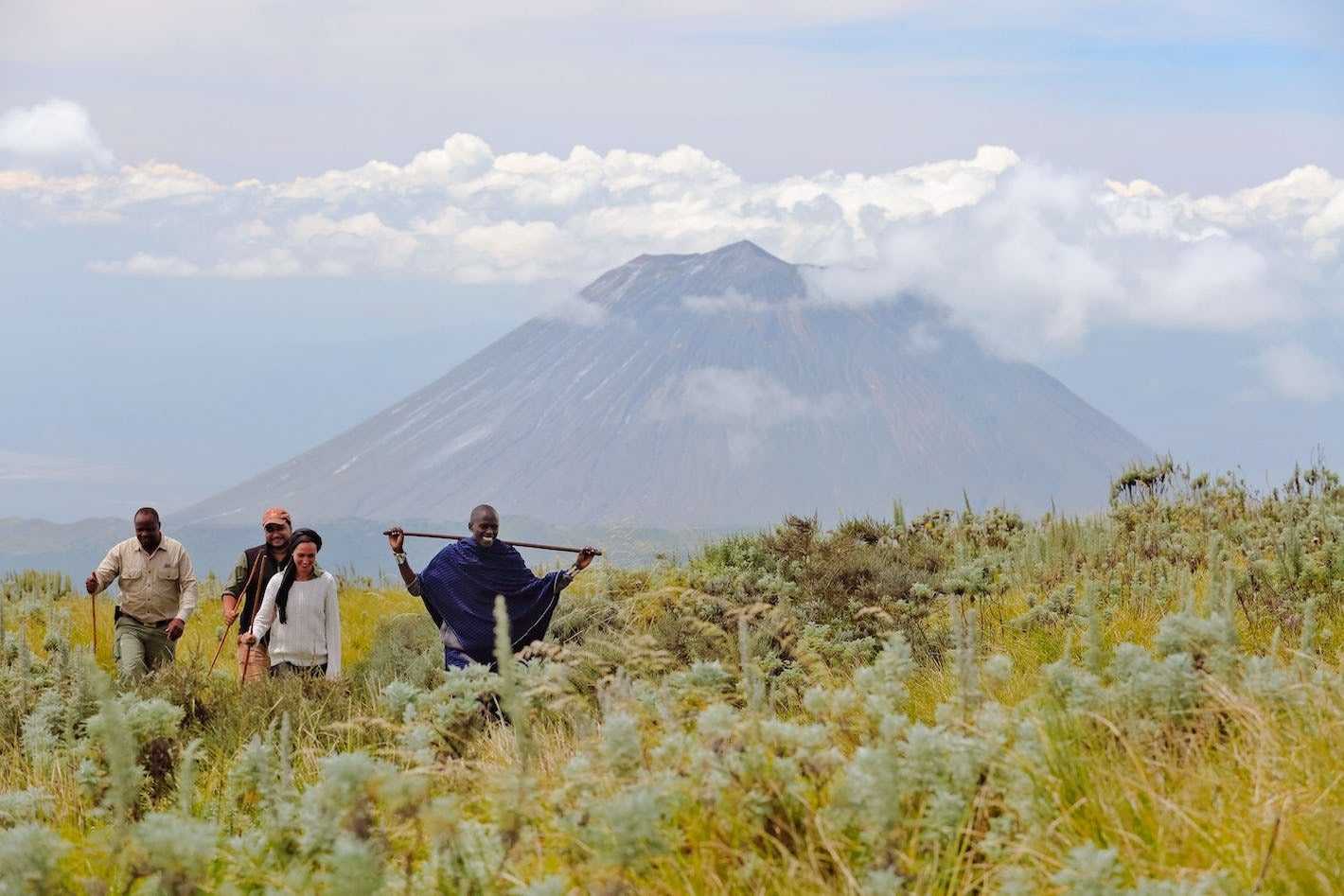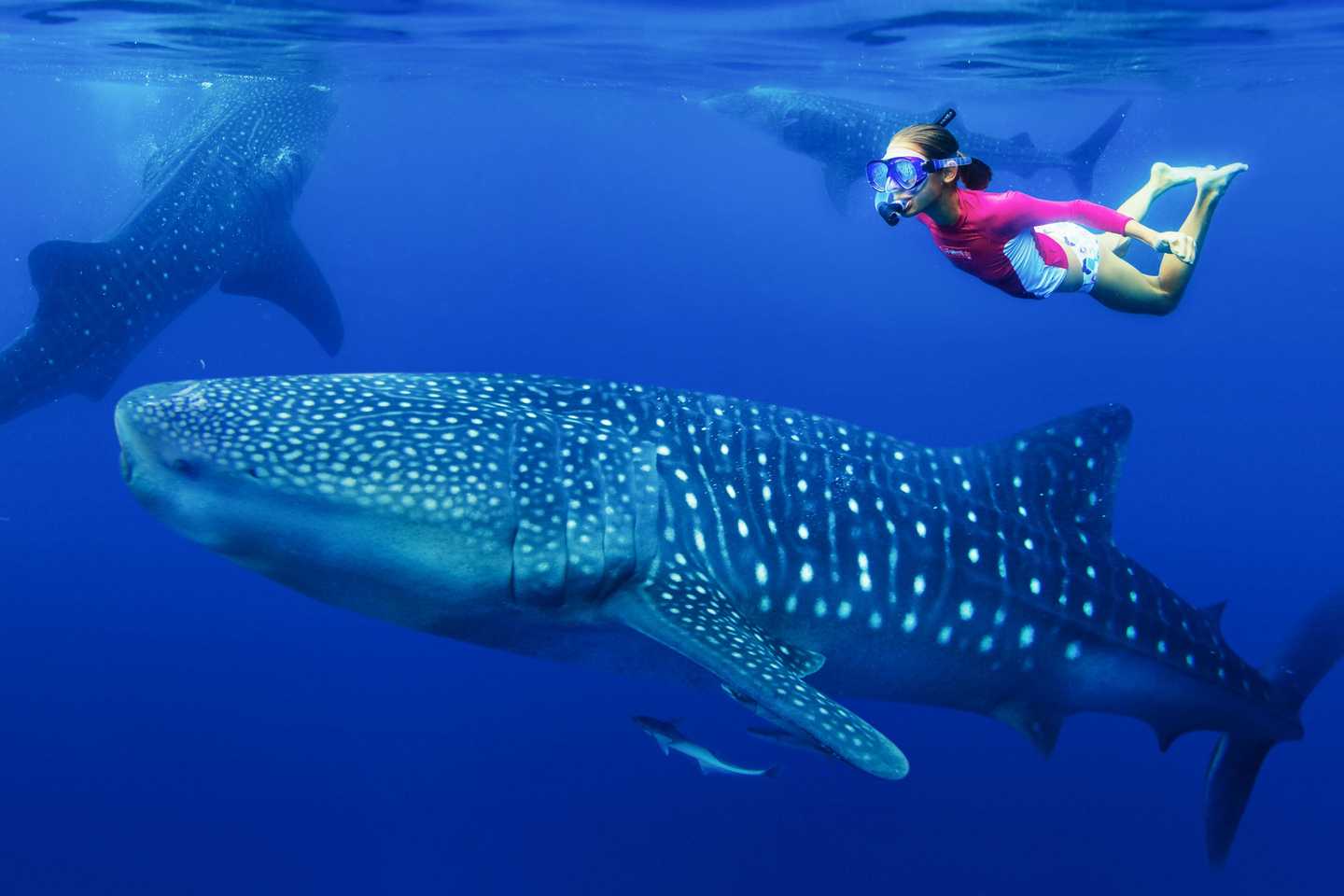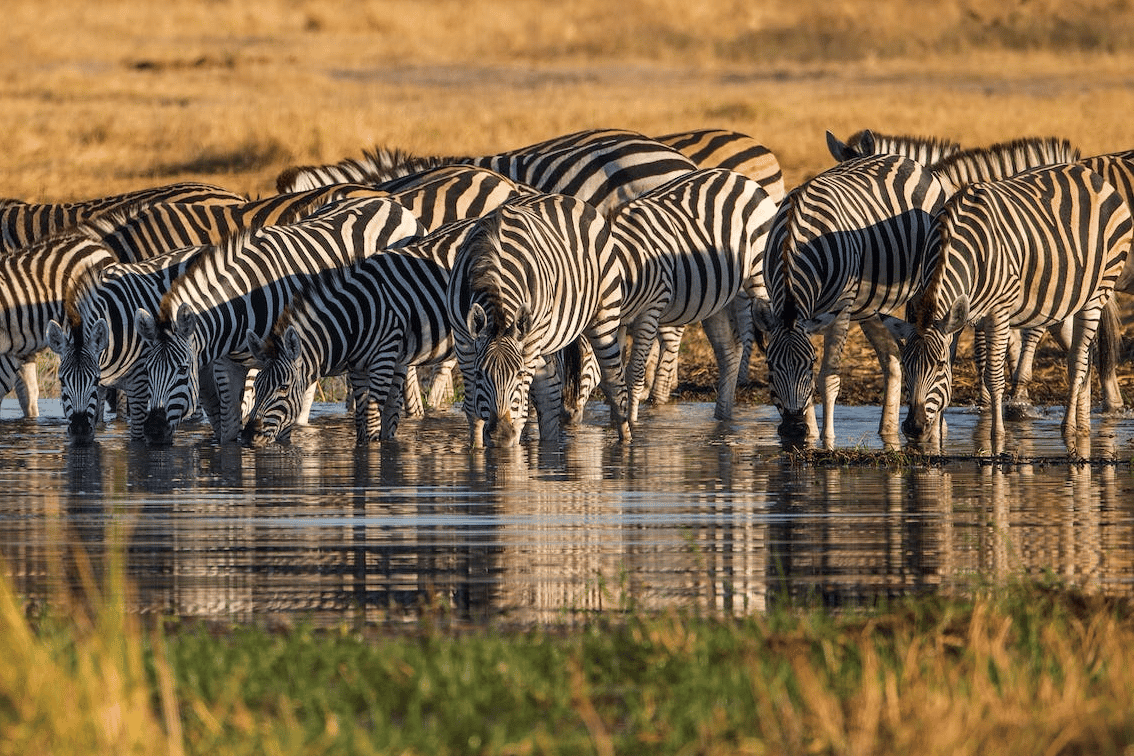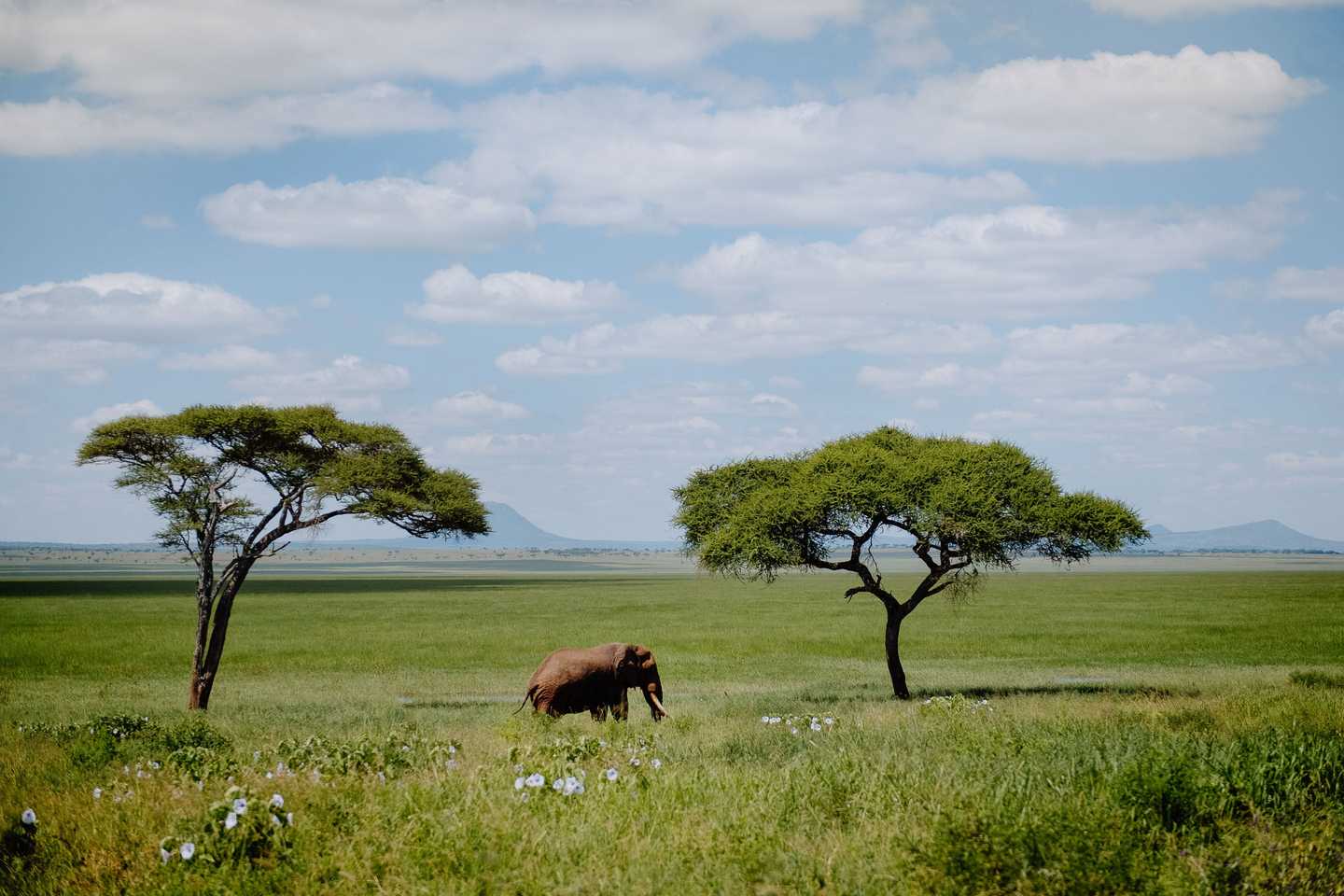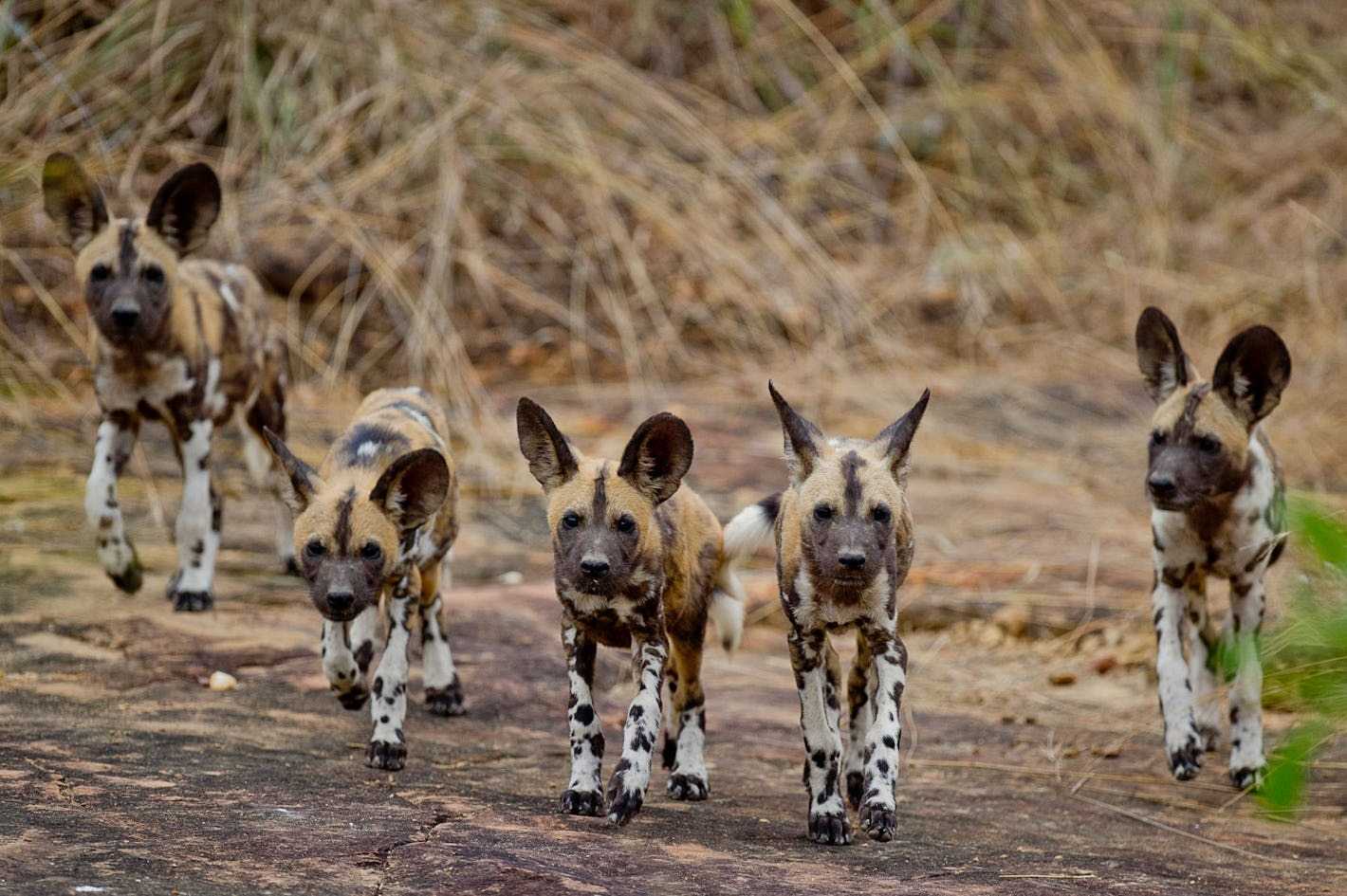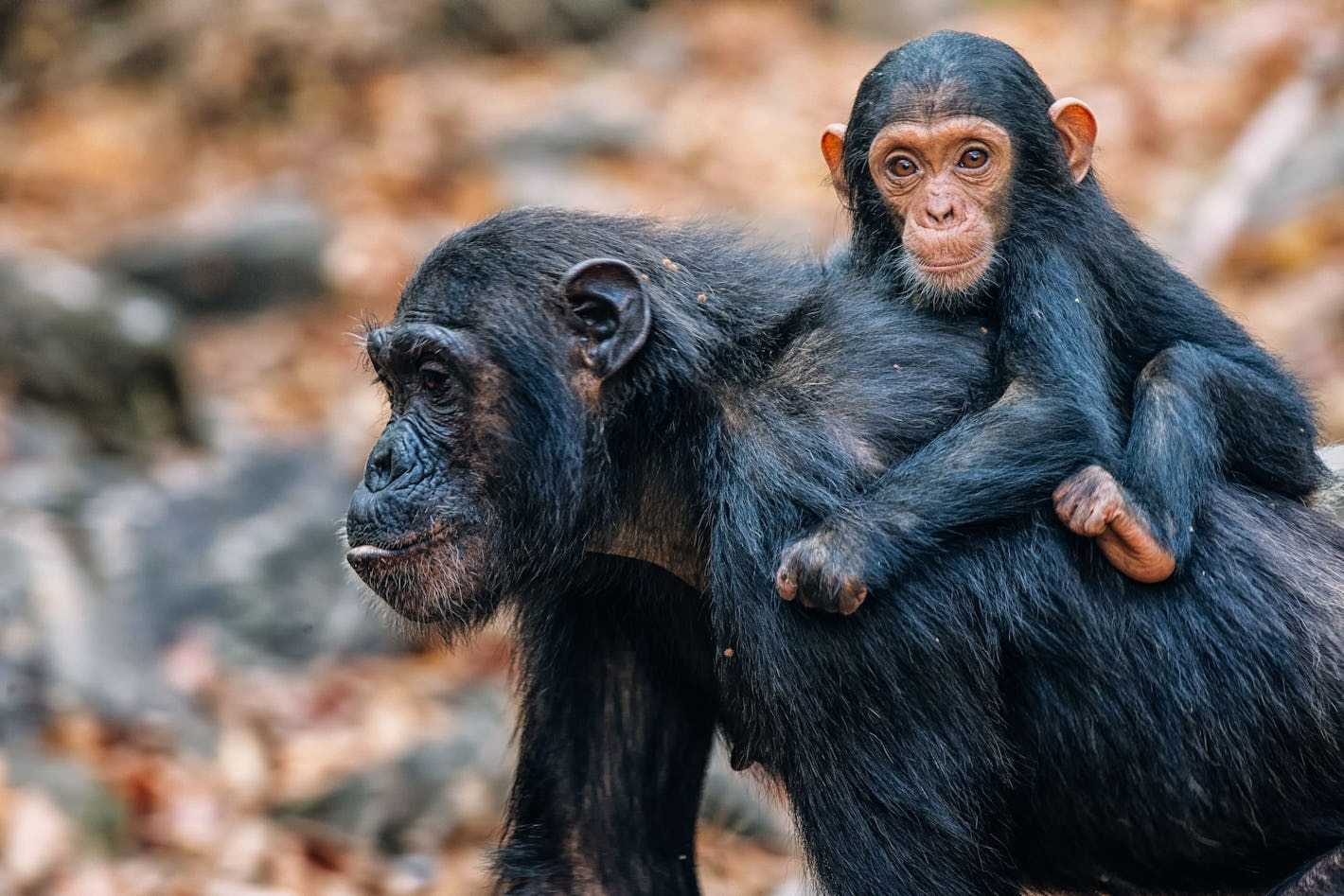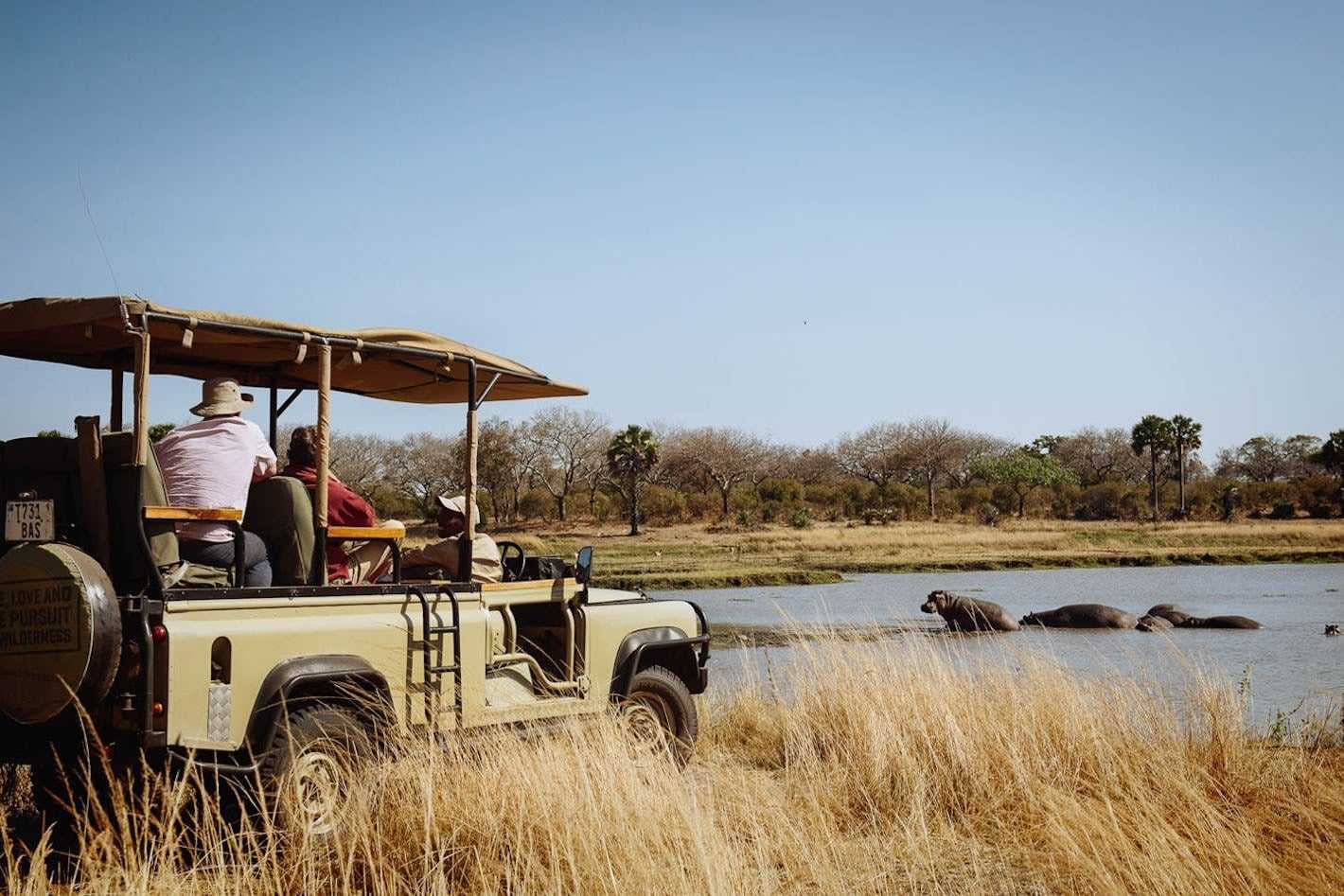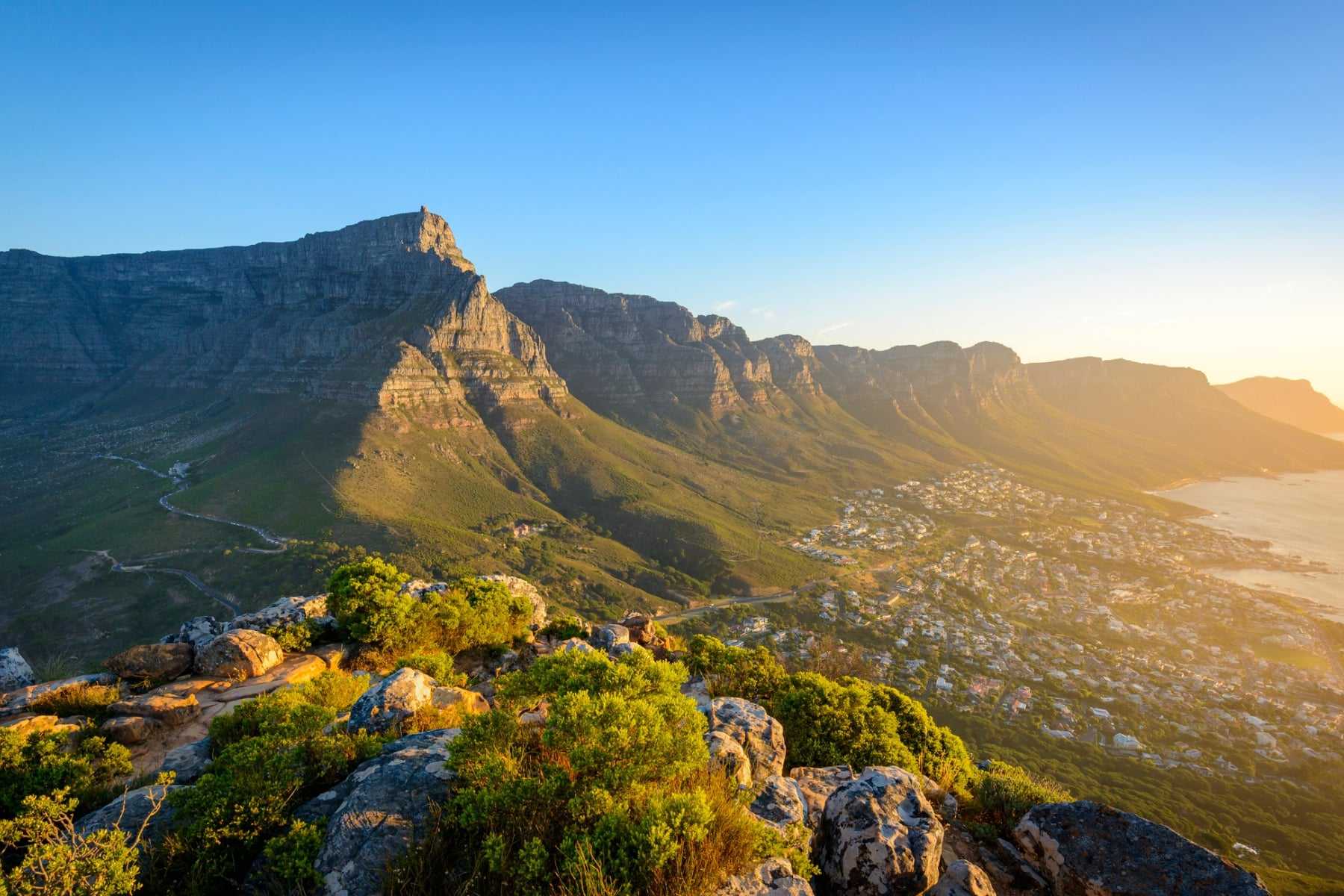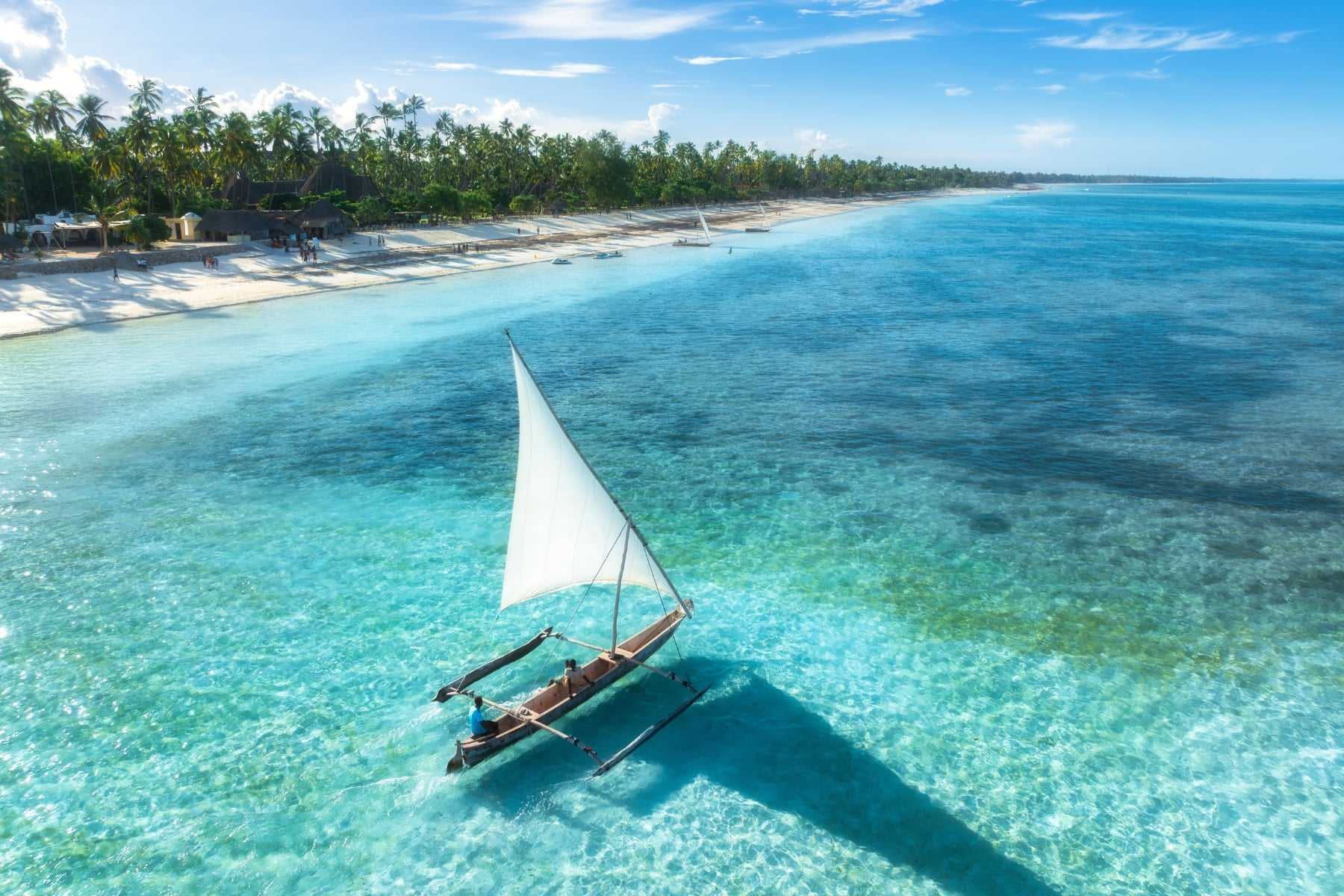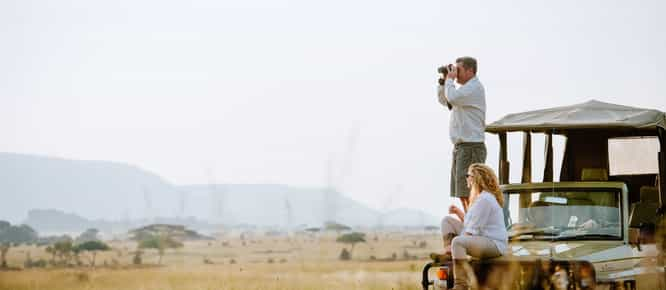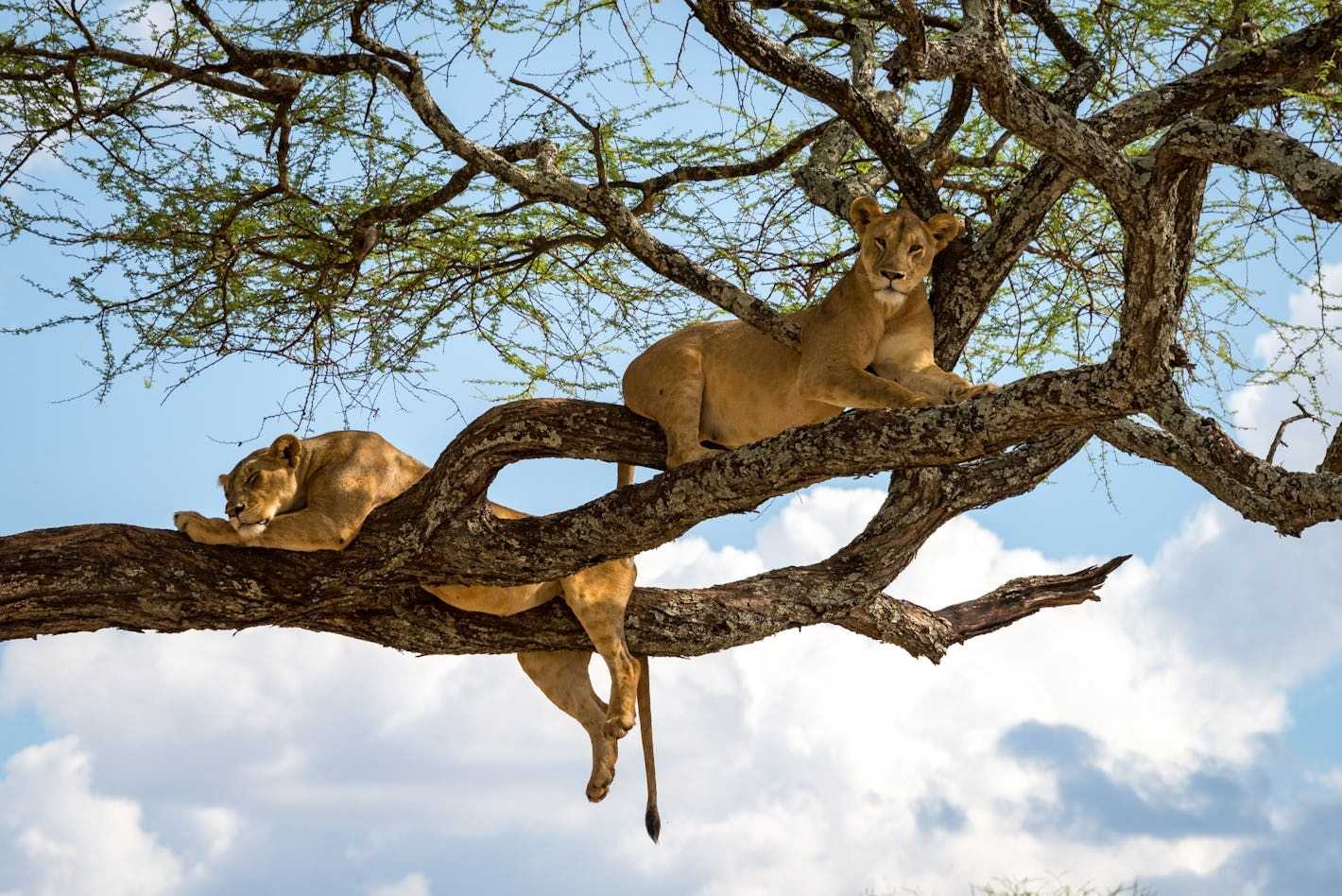
Tanzania Wildlife Guide
Above all, Tanzania is known and loved for the wildlife that roams its horizon-reaching plains, resting above and below the surface of its mighty lakes, and swimming in the sparkling waters off the coast. In every corner of this East African giant, unique natural events take place round the clock, from the iconic to the truly rare. It can be hard to choose between them all, but we’re here to help with a round-up of the country’s wildlife wonders and where to find them on a Tanzania safari tour.
Serengeti
The Great Migration and the Serengeti go together as easily as gin and tonic, and that’s because the swarming pilgrimage of wildebeest, zebra and impala spends most of the year in this region of Tanzania. After the rush of the river crossings in the north, the gnus return to the southern Serengeti in the new year to dine on rain-replenished shoots and get their energy up before calving season. Over the course of a few weeks in February, around 500,000 calves are born, whilst predators are on the prowl with their own young in tow. The experience is both tender and heart-wrenching at the same time.
For a less tourist-heavy view of some of the river crossings, the Serengeti’s Western Corridor is a good place to be between May and June, where scores of wildebeest attempt to cross the Grumeti River. Or plan your safari from July onwards to catch the main event as they plunge through the crocodile-infested waters of the Mara River from the northernmost fringes of the Serengeti.
One of the most untouched and remote sectors of the Serengeti is Soit Le Motonyi in the east. It was closed to humans for two decades in order to protect and grow the cheetah population and is now home to the largest concentration of the cats in Africa. Marvel at these fleet-footed cats as they wander amongst the great boulders at Gol Kopjes, or spend time with researchers, learning what it takes to conserve the Serengeti’s cheetahs.
The Masai or ‘Kilimanjaro’ giraffe is the largest of its species, the tallest creature on Earth, and Tanzania’s national animal. Set apart by their darker, smaller and very jagged markings, the Masai giraffe is distinctive and majestic – and the northern Serengeti is one of the best places to see them in the wild, where they roam in groups of up to 40.
Ngorongoro Crater
The Ngorongoro Crater is among Mother Nature’s finest work; borne from a volcanic eruption that left behind layers of nourishing ash and an unbroken caldera, it is an ecosystem all of its own. The bowl is covered with golden grasses and home to almost 30,000 large grazers including wildebeest, Burchell’s zebra and buffalo, along with the rest of the Big Five. In fact, it’s one of the best places to see black rhino in East Africa, who share the Crater with huge numbers of black-maned lion.
Within the Ngorongoro Crater, Lake Magadi is a glimmering pool where flamingos gather in their hundreds. Across the Ngorongoro Conservation Area, there are over 500 recorded species of birdlife, many of which congregate in the Crater, including the ostrich, secretary bird and kori bustard – the heaviest bird in the world.
Zanzibar & Ras Kutani
The waters off Zanzibar’s islands have long been regarded as some of the finest places to go scuba diving in Africa – and the world! Boasting a visibility between 20 and 60 metres, the conditions are fantastic for spotting reef-dwelling marine life including white- and blacktip reef sharks, seahorses, hawksbill turtles, eagle, manta and marbled electric rays, moray eels – and pods of dolphin. Between October and February, whale sharks can be spotted off Mafia Island, whilst green sea turtles are often spotted on the beaches of Ras Kutani, where they nest and babies hatch between January and May.
Within the lush interior of Zanzibar’s main island, hike through Jozani Forest to spy endangered red colobus, sykes and blue vervet monkeys, bush babies, and a host of bird and butterfly species. Giant and leopard tortoises can also be spotted in Jozani.
Lake Manyara, Lake Natron & Lake Eyasi
As you trundle along winding tracks through the grass, a shimmering haze gives away the location of Lake Manyara. The lake is just one part of its National Park, which happens to boast some of Tanzania’s highest wildlife densities, inside a fairly small area. On game drives, you may come across the curious and very rare sight of lions napping happily in the trees. No one can say for certain how this tradition began, but it is amazing to witness a lion clawing their way up to a comfortable looking branch.
If birds are your bag, Lake Natron is the birthplace of 75% of the world’s flamingos, which flourishes thanks to a lack of natural predators. Lake Eyasi is also home to a phenomenal array of birdlife from the African spoonbill to great white pelicans.
Tarangire
During the dry season (typically June to October), Tarangire River draws wildlife from far and wide, and is especially famous for the enormous herds of elephant and buffalo who arrive on its banks for a drink. Tarangire’s big cats won’t be far behind them either, creating a rather photogenic scene along the great river. What’s even more magical is taking it all in on foot…
Nyerere NP (‘The Selous’) & Ruaha
As the largest game reserve in Africa, it’s no surprise that Nyerere National Park is a wildlife gem, but one of the most coveted safari moments is spotting African painted dogs (wild dogs). Between May and June, wild dogs are denning, offering the greatest chance of seeing them and their pups, especially if your guide knows where to look.
The splendid Rufiji River runs through the park, providing a vital water source for Tanzania’s greats including buffalo, elephant and black rhino. The river itself teems with hippo, crocodile and over 400 species of birdlife, which you can spy on a scenic boat ride. And we can’t forget the ‘Selous’ lions who move in massive prides and are famous for their proclivity for daytime hunts.
Speaking of which, Ruaha National Park is home to around 10% of the world’s entire lion population, and its prides can reach 20 and more. It is also a haven for elephant and boasts the highest numbers among Tanzania’s national parks. Watching the majestic pachyderms march amidst towering baobabs is a sight indeed.
Similarly to Nyerere, endangered and rarely-seen wild dogs might just make an appearance, specifically when they are denning. Their pups are adorable and it’s amazing to think of the hunters they will grow into.
Mahale Mountains, Rubondo Island & Gombe Stream
Set along the eastern shore of Lake Tanganyika, the forest-clad Mahale Mountains hide around 1,000 chimpanzees. You’ll set off with a seasoned guide, trekking through the sun-dappled leaves until you encounter a habituated family of chimps, where you’ll spend a precious hour watching them play, groom and snack on grubs.
Even more remote is Gombe Stream, a tiny park north of the Mahale Mountains where less than 200 chimpanzees dwell in its forests. If you’re a Jane Goodall fan, this one will sound familiar.
Once you have met the chimpanzees, snorkelling in one of Africa’s largest lakes awaits. There are around 280 species of fish in Lake Tanganyika and when you pop back up, don’t be surprised if there are bigger creatures drinking and grazing along the shore.
Sitting pretty in the middle of Lake Victoria, Rubondo Island has been nicknamed ‘Noah’s Ark’ and it’s a stomping ground for elephant, sitatunga antelope and chimpanzees, while huge numbers of hippo and crocodile frequent the shores.
Katavi
Both the dry (May to October) and rainy season (November to April) have their own allure in Katavi. The former brings herds of elephant and buffalo, which can reach their thousands, to the scarce waterholes and Katuma River. The rains leave Katavi’s seasonal lakes filled to the brim, which also means the birds will be present in all their plumaged glory. There are over 400 species including a variety of waterbirds, eagles and, of course, the migratory species. Katavi is also home to some of Africa’s biggest congregations of hippo and crocodile, making for a remarkable scene.
